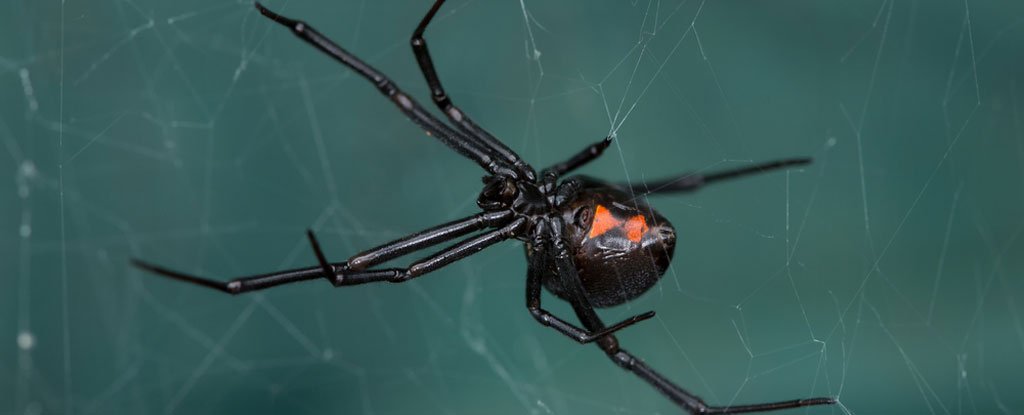A recent effort to sequence the genome of an unusual virus has led to a bizarre discovery: one-third of the virus's genes are animal-like, and match up with the DNA of a toxin found in black widow spider venom.
It's not yet clear how the virus acquired this spider DNA – and that of other animals too – but researchers suspect it co-opted the genes to make its day job easier: infecting bacteria that live within spiders and insects.
"Discovering DNA related to the black widow spider toxin gene came as a total surprise because it is the first time that a phage – a virus that infects bacteria – has been found carrying animal-like DNA," says biologist Seth Bordenstein from Vanderbilt University.
Bordenstein and his wife, microbial ecologist Sarah Bordenstein (also at Vanderbilt), have been studying the virus in question for 15 years now, but never guessed that by sequencing its DNA, they would find this never-before-seen trait.
Usually, viruses stick within established biological boundaries, infecting just one kind of organism: either bacteria, archaea (single-celled organisms without a nucleus), or eukaryotes (animals and plants).
But this virus – called WO – bucks the trend. Being a bacteriophage, its primary target is the bacteria, Wolbachia, but it's somehow developed a way to infiltrate animal cells too.
"It's the first report of a virus infecting multiple domains of life," biologist Elizabeth McGraw from Monash University in Australia, who wasn't involved with the research, told Ed Yong at The Atlantic.
And WO's broader perspective on life seems to come with plenty of perks. McGraw says the virus's chimeric arsenal makes it a kind of "Frankenphage that may be better at infecting animals than its ancestors that contained only phage genes".
While we don't know for sure how WO pulled off this genetic heist, the Bordensteins think doing so must have been necessary for the virus to both infect and then escape from its bacterial focus, Wolbachia.
These bacteria infect arthropods – insects, spiders, and crustaceans – by wrapping themselves in the animals' cell membranes. Therefore, for WO to do its thing and get at Wolbachia, it has to punch through two layers of membranes: bacterial and animal.
To infect the bacteria, the phage's native DNA would be sufficient. But first it has to perforate the arthropod layer to get inside.
This is where animal genes are likely to come in handy, because the spider venom incorporated in WO's DNA matches up with the genes that code for latrotoxin – a deadly neurotoxin that's effective because it pokes holes in cell membranes.
While that ability is useful for subduing the black widow's prey, it also seems to double as an effective break-and-enter kit for the nimble WO.
"We suspect it makes pores in the membranes of the arthropod cells that surround Wolbachia, thereby allowing the phage to overcome both the bacterial and arthropod membranes that surround it," Seth Bordenstein explains in a press release.
In addition to the genes for latrotoxin, the researchers also found evidence of other animal genes in WO's DNA, including sequences eukaryotes use to sense pathogens and avoid immune responses – all good things to know for an enterprising bacteriophage.
"Viruses do this," Sarah Bordenstein told The Atlantic. "It's like a buffet. They take bits from different genes and put them together to form this super gene."

Comments
Post a Comment